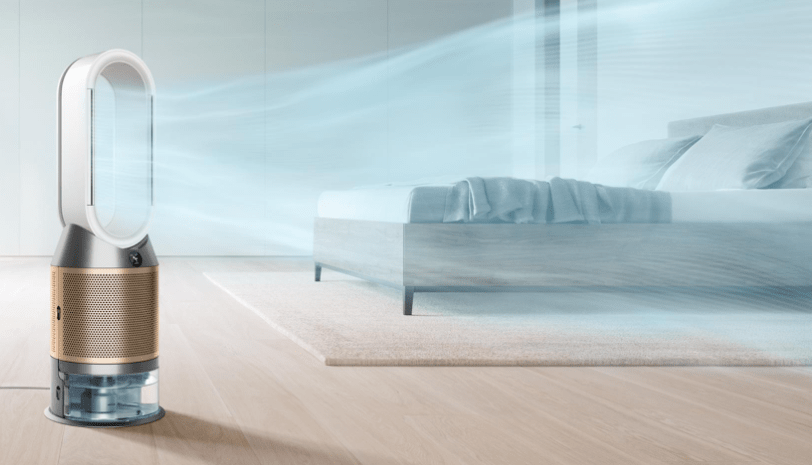The quality of air we breathe indoors profoundly affects our health, comfort, and wellbeing. Yet many homes and workplaces suffer from excessively dry air, triggering a cascade of problems ranging from respiratory discomfort and parched skin to irritated eyes and annoying static electricity. These issues typically worsen during winter when heating systems run constantly, stripping indoor air of its already limited moisture. Thankfully, proper humidification offers a straightforward solution to these everyday challenges, creating a more comfortable and healthier indoor environment.

Understanding Indoor Humidity and Its Impact
Indoor humidity – the amount of moisture present in the air within our buildings – plays a crucial yet often overlooked role in our daily comfort. The sweet spot for human health and comfort typically falls between 30-50% relative humidity. When levels dip below this range, the effects can be surprisingly widespread. Your respiratory tract becomes irritated, asthma and allergy symptoms may flare up, and skin and lips can crack and become uncomfortable. Your home itself suffers too – wooden furniture may develop cracks, paint might begin to peel, and electronic equipment can fall victim to increased static electricity.
The changing seasons dramatically affect indoor humidity. Winter air naturally carries less moisture, and when this already-dry air gets heated inside our homes, relative humidity plummets even further. Modern, energy-efficient buildings with excellent insulation can inadvertently trap this dry air inside, making proper humidification an important consideration year-round.
Types of Humidifiers and Their Mechanisms
The market offers several distinct humidifier types, each employing different techniques to add moisture to your air:
- Evaporative humidifiers push air through a moistened wick or filter using a fan
- Ultrasonic humidifiers create fine mist through high-frequency vibrations of a metal diaphragm
- Steam vaporizers heat water until it becomes steam, which then cools before entering your room
- Impeller humidifiers use a rapidly rotating disk to propel water against a diffuser, creating a cool mist
Each variety comes with its own set of advantages. Ultrasonic models run whisper-quiet but may leave white dust residue if your water is hard. Evaporative units typically cost less upfront but often require more frequent filter replacements. Steam vaporizers effectively kill most waterborne bacteria but draw more electricity. Impeller models offer child-friendly cool mist but can disperse minerals from hard water.
Choosing the Right Humidifier for Your Home
Selecting the ideal humidifier requires careful consideration of your specific needs. Room size stands as perhaps the most critical factor – an undersized unit will struggle to effectively humidify your space, while an oversized one might create excessive moisture. Noise levels matter significantly, especially in bedrooms or quiet work areas. Maintenance requirements vary widely between models, as do energy consumption and sensitivity to water quality.
Strategic placement dramatically affects performance. Position your humidifier away from walls and furniture to allow moistened air to circulate freely throughout the space. Always adhere to manufacturer guidelines regarding humidity levels to prevent over-humidification, which can lead to condensation on windows and surfaces – potentially encouraging mold growth.
Integrating Advanced Air Treatment Technologies
The field of indoor air treatment has evolved considerably beyond basic humidification. Today’s sophisticated systems often combine multiple functions to address overall air quality comprehensively. For those seeking more advanced solutions, certain modern devices merge humidification with air purification to enhance indoor air quality. For example, dyson humidifiers feature innovative technology that combines these functions, delivering effective moisture control while simultaneously filtering airborne contaminants.
These integrated systems prove particularly valuable for allergy sufferers and those with respiratory conditions, as they tackle both humidity imbalances and air pollutants in one comprehensive solution.
Maintaining and Optimizing Your Humidifier
Consistent maintenance remains essential for any humidifier’s performance and longevity. Clean your unit according to manufacturer instructions – typically every 1-3 days – to prevent mineral buildup and discourage bacterial growth. Invest in a simple hygrometer to monitor indoor humidity levels, allowing you to adjust settings based on actual measurements rather than guesswork.
Seasonal adjustments become important as outdoor conditions change – you’ll likely need more humidification during dry winter months and less (or none at all) during humid summer periods. Address any unusual noises or decreased output promptly, as these typically signal maintenance needs that shouldn’t be ignored.
Real-World Applications and Case Examples
Countless households report meaningful improvements after implementing proper humidification strategies. Families in arid climates frequently experience welcome relief from static electricity, fewer nosebleeds, and noticeably improved sleep quality. Office environments that maintain optimized humidity levels typically record fewer employee sick days and respiratory complaints, particularly during heating season when indoor air tends to become exceptionally dry.
Conclusion
Maintaining balanced indoor humidity represents an important yet frequently overlooked aspect of creating a truly healthy home environment. By understanding the various humidification technologies available and selecting the right solution for your specific circumstances, you can significantly enhance your indoor comfort and potentially alleviate certain health issues. Consider your space requirements, maintenance preferences, and whether an integrated air treatment approach might provide the comprehensive solution you need for optimal indoor air quality throughout the year.



